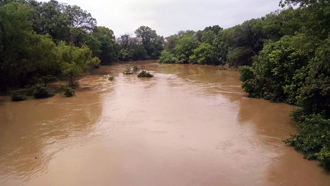Climate Adaptation and Erosion & Sedimentation

EPA works with local, state and tribal governments to reduce runoff and improve water quality by minimizing the introduction of sediment into rivers, lakes and streams.
Climate changes, such as more frequent and intense rain events, can increase erosion and result in greater amounts of sediment washing into rivers, lakes and streams.
More frequent and intense rain events, can increase sediment loading from stormwater runoff. Stronger storms, higher river levels, and faster stream velocity can increase erosion and result in increased suspended sediment (turbidity) in water bodies as well as affect normal distribution of sediment along river, lake and stream beds. These climate impacts can challenge efforts to maintain water quality through effective erosion and sediment control management efforts.
Excessive levels of suspended stream sediment (turbidity) or a change in sediment distribution resulting from more frequent and intense storms can negatively ecosystem health. The impacts from changing levels of erosion and sedimentation threaten fish, invertebrates and aquatic vegetation, in particular.
Increased sediment and erosion in rivers, lakes and streams can also affect water quality and availability of drinking water sources. For example, increased sedimentation can affect the storage capacity of reservoirs and increase the need for treatment at water utilities.
